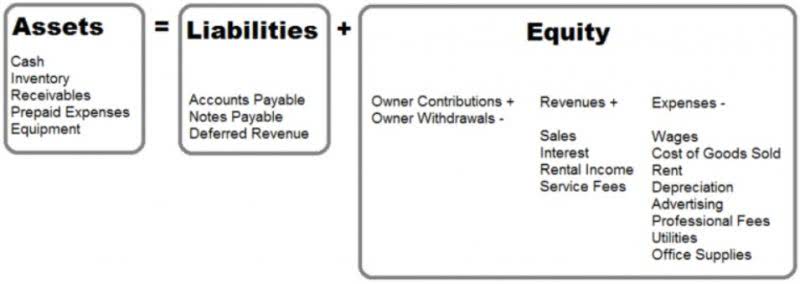
To ensure your accounting books are accurate, learn how to record payroll transactions. This goes back to journals 2 and 3 where you’re recording payroll accounting examples all taxes you’ve paid. These include taxes the employee is paying via their withholdings each pay period, as well as taxes the business owes.
Step 10. Print Paychecks
If for example, an employee has a normal hourly rate of 10.00, and worked for 40 hours of which 5 hours were time and a half overtime, then the calculation would be as follows. Time and a half is a term used in relation to the payment of employees by a business. A garnishment is a legal process in which one person (the garnishee) is ordered to withhold money due to another person and to pay the money held over to a third party. So for example, if A owes money to B, then C can be instructed to hold money due to A, and to pay the money withheld over to B. Sales are reported in the accounting period in which title to the merchandise was transferred from the seller to the buyer.
Set Up Recurring Payments

But a record of tax payments will show unemployment taxes listed alongside any taxes the employee paid. The purpose of payroll accounting is to keep track of employee compensation and related payroll costs. Recording these costs can give small business owners an accurate picture of their expenses. You may find that hiring an accountant or bookkeeper to record these transactions can help you spend more time working on your business. ABC Company has one employee, Mary Smith, that is paid weekly. The payroll process examples below are a weekly payroll journal entry, which includes her gross wages, payroll withholding, and ABC Company’s cost.
Benefits of payroll reports
This is done with information provided on an employee’s W-2 Form. In order for an employee to be able to fill out their W-2 form and be registered as an employee, they will need to provide you with their social security number, as well as their personal information. This number should https://www.bookstime.com/ be obtained by the employee at the beginning of the employment relationship or when they began working for the first time, if this is not their first job. Be sure that the number the employee has provided you with is definitely a social security number, and not an ITIN number.
Payroll reports are one of many different types of reports that can assist with accurate budgeting and forecasting, improving the financial health of your business over time. When an employee is deregistered with the tax authorities, the company is no longer classified as their main employer. Once this has happened, the new employer can become registered as the primary employer and receive information from the EFTPS database.

On the other hand, the company must report to the Internal Revenue Service (IRS) the amounts it has paid to its employees. Manual payment entries are simpler than initial recordings since there’s no liability stage. Initial recordings are the most common types of entries you or your accountant will create when doing your payroll accounting. These are the entries you saw in the examples that create the expense and then track each payment.
- Also, it allows you to determine the cost of hiring more full-time employees, part-time workers, consultants or freelance contractors.
- Insurance Expense, Wages Expense, Advertising Expense, Interest Expense are expenses matched with the period of time in the heading of the income statement.
- As a result, the employer must remit to the federal government 2.9% of its employees’ wages and salaries.
- Major kinds of taxes would be state income taxes, federal income taxes, state unemployment taxes, federal unemployment taxes, or taxes for health insurance or other premiums.
- The benefits you offer, your industry, and other factors affect which accounts you need to record payroll.
- You want to decrease the payroll payable account with a debit and the cash account with a credit.
Usually the pay for the hours worked in excess of 40 hours per week. Federal laws require payment for these hours for employees who are not able to control their hours. For example, a company is required to pay a production worker or office clerk for hours in excess of 40 per week, even if they are salaried.
How to record a payroll journal entry in 5 steps
Plus, employees will also be able to track the amount of their compensation allotted for tax obligations. In this article, we explain everything you need to know about payroll accounting, how to get it done and when to start using payroll software. Form W-3 is called the Transmittal of Wage and Tax Statements.

In this case, you would credit a liability account, or payable, until you’re ready to pay. If that’s not the case, you need to double-check the totals and locate the accounting mistakes. You have to calculate the amount of taxes withheld from your employee’s gross pay. It may seem like there’s a lot of work involved, but it’s not as complex as it sounds. Here’s everything you need to know about payroll accounting, why it’s important, and how you can set it up. If manual payments have already been made to employees, such as advances, then deduct these amounts from the remaining net pay.
Form W-2 is called the Wage and Tax Statement, and it lists total gross wages, some tax deductions and benefits for each employee. Employees need this form to file their individual taxes, which is why employers must provide copies of Form W-2 to employees and all applicable governments by January 31 of the following calendar year. All companies are obliged to carry out an annual payroll tax settlement at the end of the year. The purpose of this is to check monthly withheld payroll tax at the end of the year against the annual payroll tax table. This allows compensation for differences that may arise when comparing annual income tax with payroll tax actually paid. This kind of difference may occur, for example, if the salary has changed during the year or if bonuses have been distributed.
